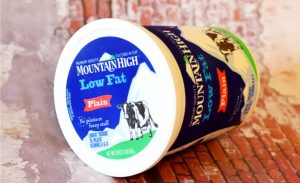The AAA reclassified dairy as a basic commodity, which allowed price supports and production adjustments, but the industry did not support the proposal and it was not adopted.
Marketing agreements and licenses were the next proposals put on the table. They were intended to guarantee payment to producers in designated areas on a class price basis, pooled payments, and the establishment of minimum retail and producer prices by dealers. The agreements were voluntary and only popular in large cities. Even though the agreements had merit, there were no controls to guarantee they would be honored, or that higher retail minimums would transfer to bigger paychecks for farmers.
To no one’s surprise, retailers did not like dealers setting minimum retail prices, so this was abandoned in 1934.
Following several Supreme Court challenges, Congress passed amendments to the AAA in 1935, most notably replacing the market agreements with orders, or Federal Milk Marketing Orders that are still in use today.
The orders created uniformity in pricing, but, perhaps more importantly, they assured enforcement. It was at this time that class pricing, location differentials and market-wide pooling of revenues were also authorized for each FMMO. If 75% of the producers in any order agreed, individual dealer pooling would be permitted.
Government purchase of surplus products was part of the 1935 act, although the impact on the industry was not great since manufactured products made up less than 1% of all production at that time.
The federal government passed the Agricultural Marketing Agreement Act in 1937, which kept marketing agreements and orders in place. Authors of the act stated that parity in payments to farmers over geographical areas was one of its main purposes, but USDA insisted that market stability was the primary objective.
While the AAA was crafted to deal with impacts of market instability during the Great Depression, the AMAA’s intent was to create longterm built-in stability in the milk markets. All dealers within an approved marketing area would be subject to its regulations — uniform pricing by class reduced price undercutting and gouging.
I don’t know about you, but I am intrigued by how much our current markets and price controls are shaped by these actions from the quite distant past. As markets stabilized, higher prices led to increased production and the almost routine over-supply, and in some areas the surpluses began to accumulate. Some regulators thought to enact quick price adjustments, which were abandoned because of their anticipated negative impacts on individual farmers.
How did the government deal with the surplus situation?
Well, it was not a cause-and-effect response, but the surpluses were quickly eliminated when the U.S. entered World War II. We went from having surpluses to a need for increased production. Several interventions were put in place, namely government purchase of butter on the open market, price parity guarantees and incentive payments to farmers who increased production.
Because manufacturing plants were competing with fluid milk processors at this time, the government introduced a formula price structure for Class I milk, which helped ensure enough fluid milk beverage for U.S. consumers.
Several of the price support mechanisms were removed after World War II, but the concept of government purchase of surplus dairy products remained and became the foundation of the Agricultural Act of 1949. That act also included changes to parity price calculations and the introduction of flexible pricing supports.
By now, you are most likely seeing the influences of these government actions on our current dairy pricing systems, as I noted earlier. Next week I will pick up with the 1950s to include import restrictions and the need to rethink Class I price calculations.
I am grateful to Dr. Andrew Novakovic for giving me permission to use his and Eric Erba’s 1995 article, “The Evolution of Milk Pricing and Government Intervention in Dairy Markets,” in developing the early history of price supports for this series of articles.
PMMB is always available to address concerns and questions. I can be reached at 717-210-8244 or by email at chardbarge@pa.gov
Carol A. Hardbarger is the secretary of the Pennsylvania Milk Marketing Board.

![o país] tem que ter o seu território protegido, não somente em relação aos seus ecossistemas e meio ambiente, mas também com relação à produção agrícola](https://br.edairynews.com/wp-content/uploads/2024/09/1-120-300x183.jpg)









